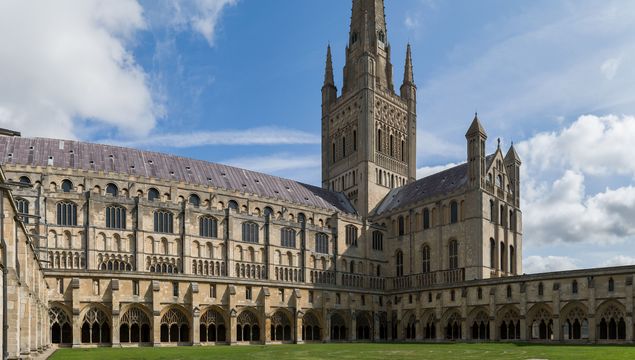
Norwich Cathedral, NorfolkDiliff / Creative Commons.
Among the British icons known worldwide, up there with stately homes, pubs and gardens, are its unmatched and well-cared-for medieval cathedrals.
From the arrival of William the Conqueror in the 11th century, the Normans embarked on a building program over the next 300 years, not just raising castles, but building soaring diocesan cathedrals–the seats of the church’s bishops.
After the State, the Church was the most powerful and richest institution in the land. Its abbots and bishops controlled vast estates, served in Royal offices, traveled with the nobility, and sat in the House of Lords. Often built over generations, cathedral churches would have been unimaginably awe-inspiring to a people who lived a subsistence agrarian life in wattle-and-daub villages. Not only would such a place to impress the folk with the power and grandeur of God, but of the Church.
In no intentional order, here are 10 of the most impressive of England’s medieval cathedrals, well worth putting on your itinerary if you’re in the neighborhood. As for London, St. Paul’s is magnificent, but not medieval, and Westminster Abbey not a cathedral, but a ‘Royal Peculiar’.
Norwich Cathedral, Norfolk
Norfolk’s 13th-century Norman Cathedral has the second tallest spire and second-largest cathedral close in England. With a beautiful riverside setting, its two gates on Tombland front the medieval city that grew up around the cathedral. Grown rich with Norwich on the medieval wool trade, among the cathedral’s grand features are the 1,000 ceiling bosses lining the church’s unique two-story cloister.
Gloucester Cathedral, Gloucestershire
Originally built as an abbey church in the 600s, the present cathedral was begun in the 11th century in the Romanesque style with a soaring nave and magnificent fan vaulting– and all manner of Gothic appendages added over the next 300 years,. Among the notables buried here, the canopied memorial of King Edward II, murdered at nearby Berkeley Castle, marks the most famous.
Lincoln Cathedral, Lincolnshire
On a hilltop overlooking the flat Lincolnshire fens and seen for miles, Lincoln Cathedral was the world’s tallest building for 200 years and remains England’s third-largest cathedral. Its fortress towers once housed an armed garrison. Though the largely 13th-century edifice has been altered over the centuries, architectural historians and visitors alike love the result. Its impressive setting across a cobbled piazza from Lincoln Castle is unrivaled.
York Minster, Yorkshire
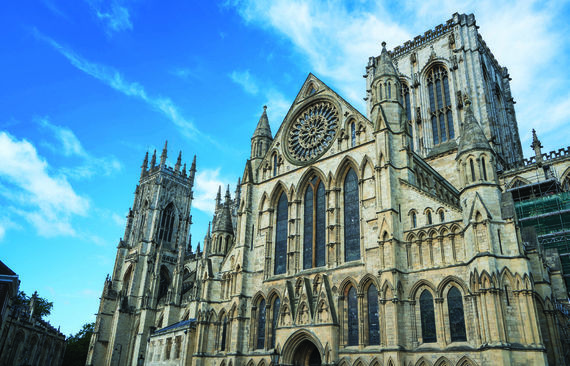
York Minster, Yorkshire.
Magnificent York Minster has been the ecclesiastical capital of England’s northern archdiocese since the time of the Saxons. Its medieval stained glass windows are the most extensive in the world. In fact, the Minster is the largest Gothic cathedral north of the Alps. Dominating its setting in the historic walled city of York, the Minster is an A-list destination.
Salisbury Cathedral, Wiltshire
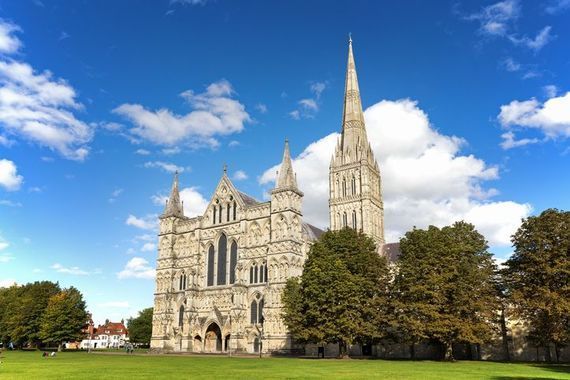
Salisbury Cathedral, Wiltshire.
Built in a single generation beginning in 1220, there is a unique symmetry about Salisbury Cathedral with its Early English architecture. Boasting England’s tallest spire at 404 feet as well as its largest Cathedral Close and cloister, the church sits picturesquely in the water meadows of the River Avon. One of the four surviving copies of the Magna Carta is on display in the Cathedral Chapter House.
Wells Cathedral, Somerset
 7
7
Wells Cathedral, Somerset.
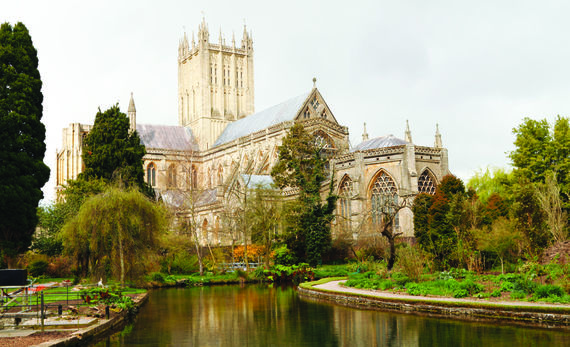
Wells Cathedral, Somerset.
Among England’s smallest cities, Wells grew up around one of the country’s most beautiful cathedrals. Built largely in the 12th and 13th centuries, Wells Cathedral is considered the first cathedral of the Gothic style. The broad lawn of the cathedral close opens on to Wells market square. The cathedral complex includes a moated Bishop’s Palace and a 14th-century Vicars’ Close, adjudged to be the oldest original residential street in Europe.
Hereford Cathedral, Hertfordshire
The Cathedral of the Marches since 1079, Hereford’s 11th-century Norman church sits on the banks of the River Wye surrounded by a small, pretty city. It is most famed for its treasures, including the 13th-century Mappa Mundi (map of the world) and the most extensive medieval chained library in the world, with some 1,700 volumes, including the 8th-century Hereford Gospels and a Wycliffe Bible. www.herefordcathedral.org
Winchester Cathedral, Hampshire
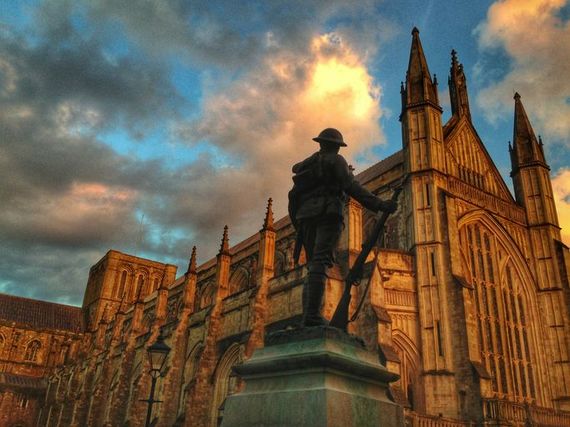
Winchester Cathedral, Hampshire.
With an architectural history spanning 400 years from the 11th century, Winchester Cathedral has the longest Gothic cathedral nave in Europe. Its powerful bishops created a stunning masterpiece in King Alfred the Great’s ancient Saxon capital, with a cathedral since the 7th century. Among those interred here are Jane Austen, Isaak Walton, St. Swithin, and Saxon kings.
Peterborough Cathedral, Cambridgeshire
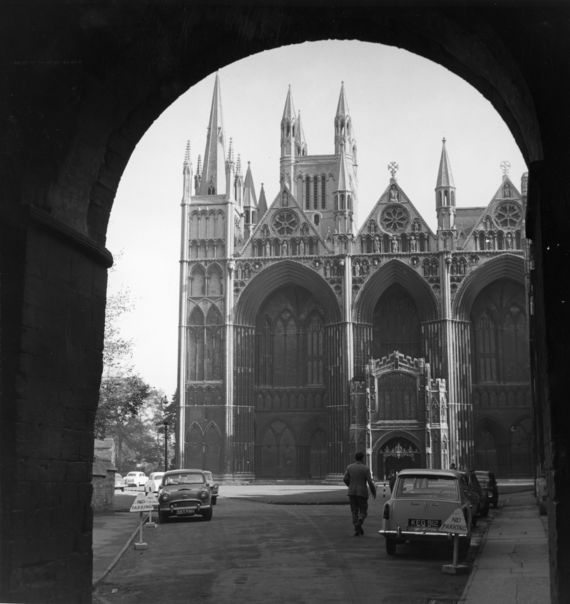
Peterborough Cathedral, Cambridgeshire.
Often overlooked by visitors, the largely intact 12th‑century Peterborough Cathedral is acclaimed for its huge three‑arched Gothic West Front as well as the elaborately painted ceiling of its nave. The cathedral is the original burial place of Mary, Queen of Scots (later interred in a magnificent tomb in Westminster Abbey) and Catherine of Aragon, among bishops and nobles of centuries.
Canterbury Cathedral, Kent
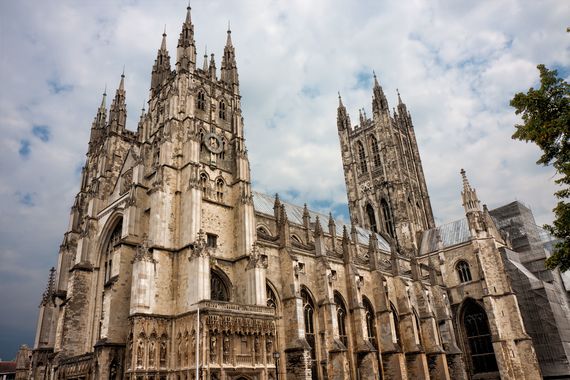
Canterbury Cathedral, Kent.
Mother church of the worldwide Anglican communion as the seat of the Archbishop of Canterbury, there has been a cathedral here since 597AD, when St. Augustine brought Christianity to southern England. Centuries of history lie beneath its Bell Harry Tower, including the famous murder of Thomas Becket. The wonderful old pedestrianized city center surrounds its gates.





Comments